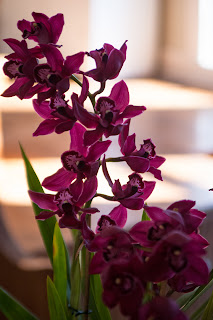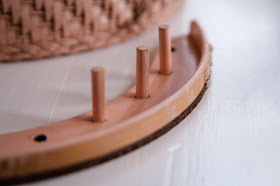Here's
Sense & Sensibility's
new pattern made up in a cheery rayon floral. This is a really nice pattern--very simple with its cut-in-one kimono sleeves. Bottom line? Bodice is two pieces, skirt is two pieces. Add a zipper and some piping (or lining), hem it, and you're out of there!
I've never finished a neckline and sleeve edges with piping before--it's truly beautiful and straightforward. My mother suggested purple velvet which would have been a dream but in the end I decided to go for the more self-effacing (ha!) matching piping made from bias strips.
Here's a view of the inside--you can see that the piping acts as a tiny facing.
I've actually made this pattern up three times since this dress and have found that it has an odd tendency for the waistline to sag in the back. I believe that the back bodice is cut lower than the front and I've had to trim it off every time; it's not a good look for my girls. Other than than, once the pattern is fitted it goes together in a snap. I recommend it to beginning seamstresses.
I'd also add these notes, which are not in the pattern instructions. Experienced seamstresses will know to do them anyway, but beginners should be warned that:
1. With a skirt of this magnitude, you might want to add a waist stay. I use a strip of seam binding sewn along the bodice's bottom seamline before the skirt is added, to support the weight of the skirt.
2. The bias edges of the bodice (neckline, shoulder, and sides) should be stay-stitched before being sewn, to keep them in shape.
3. When gathering your skirt, it's often most flattering to gather the front in two groups of gathers off to the sides of the center (see my dress photo), leaving the center flat. And the back looks best with the gathers more towards the center.
4. (EDITED TO ADD) With very drapey or thin or sheer fabric, it's a good idea to reinforce the seam that will support the zipper. I cut half-inch wide strips of interfacing and fuse them to the wrong side of the dress centered over the stitching line where the zipper will be sewn. This helps a lot with bunching and pulling.







































